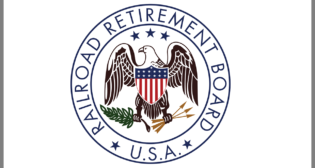
NJT sets FY2016 ops, capex budgets; hikes fares 9%
Written by William C. Vantuono, Editor-in-ChiefFacing an approximate $56 million budget gap for its 2016 fiscal year, New Jersey Transit’s Board of Directors on July 15, 2105 adopted a FY2016 operating budget and capital program totaling $4.27 billion, and a fare and service plan that includes an average 9% fare increase.
NJT set a $2.116 billion operating budget and a $2.099 billion capital program for FY2016, which started July 1, 2015.
The FY 2016 capital program “continues to prioritize investment in infrastructure to maintain an overall state of good repair, enhance safety and reliability, and improve the overall customer experience on the system,” NJT said. It includes upgrades to the Northeast Corridor (NEC, shared with Amtrak), the agency’s most utilized rail line. The NEC is allocated $61 million as part of NJT’s ten-year, $1 billion Northeast Corridor investment program. It supports continued investment in rolling stock renewal, with $87 million for rail rolling stock improvements. Funding is also provided for technology and security upgrades, local programs, and commuter rail and light rail infrastructure improvements. Some $82 million in rail station improvements are slated.
In addition, the capex program funds approximately $913 million in major capital projects that will help advance NJT’s resiliency to extreme weather events. NJ TRANSITGRID, which will serve as an electrical micro-grid capable of supplying highly reliable power when the centralized power grid is compromised, is being funded through this effort as well as other projects including Delco Lead Train Safe Haven Storage and Service Restoration, Hoboken Long Slip Fill and Rail Enhancement, Train Controls Resiliency, and Raritan River Drawbridge Replacement. All of these programs are for improvements to facilities and equipment heavily damaged by Superstorm Sandy on Oct. 29, 2012. As such, approximately 42% of the capital budget comes from Federal Transit Administration Sandy Resiliency funds, with the balance coming from federal and other sources, including 22% from New Jersey’s state Transportation Trust Fund (TTF).
NJT’s FY2016 operating budget reflects an increase of state funding along with a stable level of federal and other reimbursements, which the agency says will enable it to meet projected expenses. Approximately 59% of the operating budget is dedicated to labor and fringe benefits costs. Other significant expenses include contracted transportation services, fuel and power and materials, which together comprise approximately 27% of the operating budget.
“This year’s operating budget reflects a $76.7 million (8.3%) growth in passenger revenue, based on the fare adjustment and ridership trends,” NJT said. “Overall passenger revenue and commercial revenue represents approximately 53% of the total FY2016 operating program.” Nearly half of the revenue in the operating budget comes from fares ($1.005 billion), supported by a comparable amount from state and federal program reimbursements ($961.8 million) with the balance from a combination of commercial revenues ($115.2 million) and state operating assistance ($33.2 million).
The fare and service plan includes an average 9% increase in fares, “with no customer paying more than 9.4% after rounding, and modest changes for rail and bus service,” NJT said. “Throughout the past five years, we held the line on fare increases while maintaining high quality services and implementing new customer amenities including MyTix, Departurevision, and MyBus Now. However, costs such as contract services—Access Link, the organization’s paratransit service; Hudson-Bergen Light Rail and private carriers—and workers’ compensation, general liability insurance, healthcare and benefits and pensions have steadily risen. As a result, we were left with a significant budget gap. Although we identified more than $40 million in reductions in overtime, fuel savings, energy and vehicle parts efficiencies, we still faced an approximate $56 million budget gap for the 2016 fiscal year. To close the gap, fare and service adjustments were proposed and now approved. The fare adjustment will go into effect Oct. 1.”



